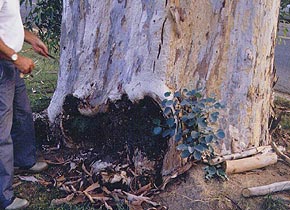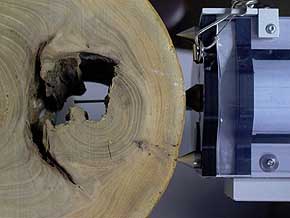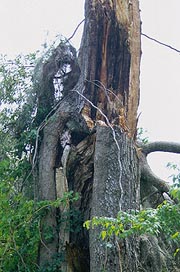Home > Tree structure basics > Structural defects > Hollows and cavities > Evaluating decay
Evaluating decay
 Decayed
wood reduces its strength. Visible decay at the base of the trunk reduces reduces
the trees ability to stand up. A thorough evaluation by trained personnel of
the extent of decay using appropriate tools and techniques such as visible tree
evaluation, mallets, drills, resistograph, and others is the best method of
evaluating risk for failure. A resistograph (shown below) is a tool that
uses a drill bit to measure the force required to drill through wood. Decayed
regions and hollows can be seen on the printout generated by the device as it
drills through the wood.
Decayed
wood reduces its strength. Visible decay at the base of the trunk reduces reduces
the trees ability to stand up. A thorough evaluation by trained personnel of
the extent of decay using appropriate tools and techniques such as visible tree
evaluation, mallets, drills, resistograph, and others is the best method of
evaluating risk for failure. A resistograph (shown below) is a tool that
uses a drill bit to measure the force required to drill through wood. Decayed
regions and hollows can be seen on the printout generated by the device as it
drills through the wood.
 Resistograph shown with a drill bit through the sound wood and into the decayed hollow. |
 Huge oak failed due to a large decayed cavity. |

